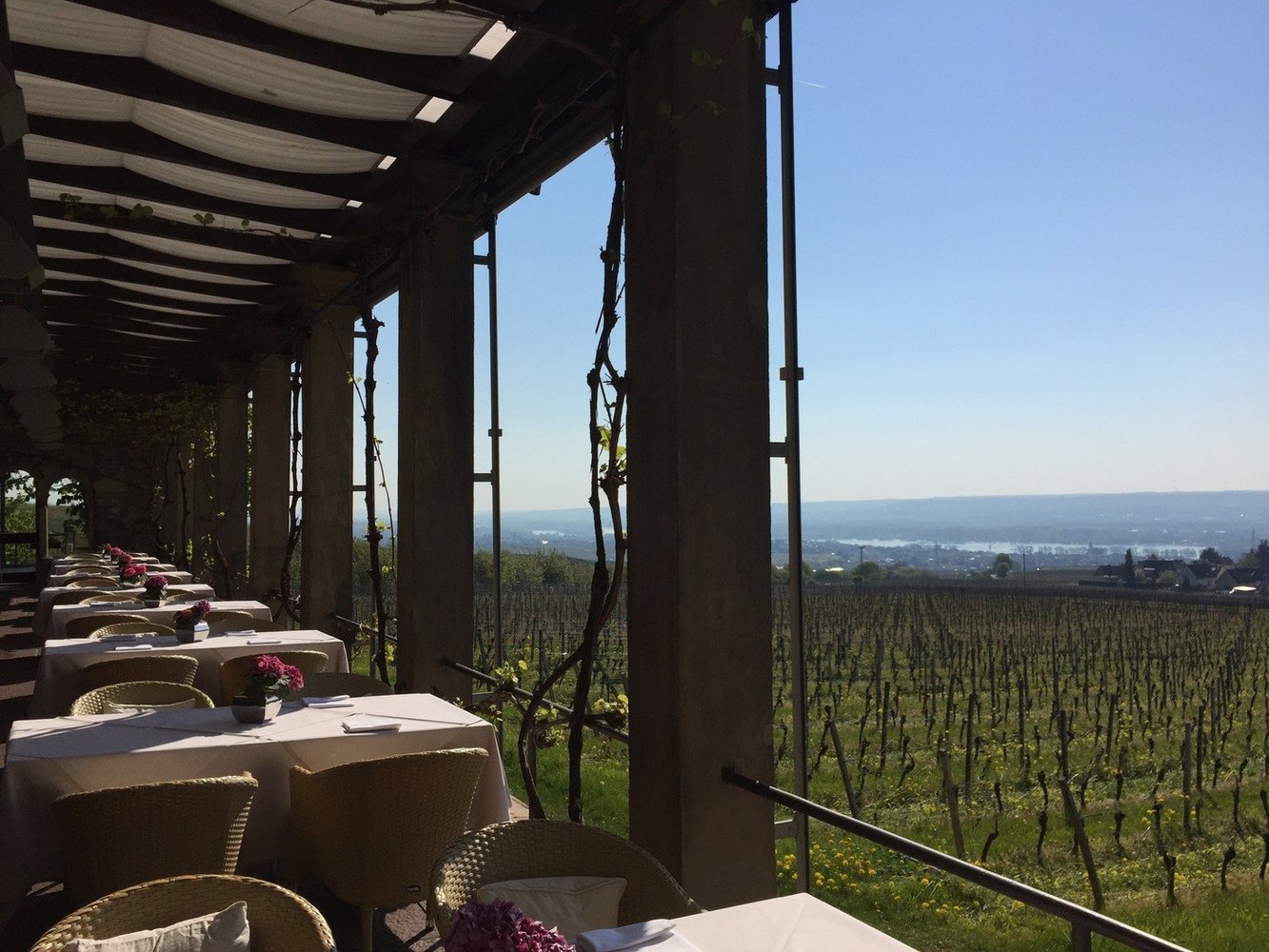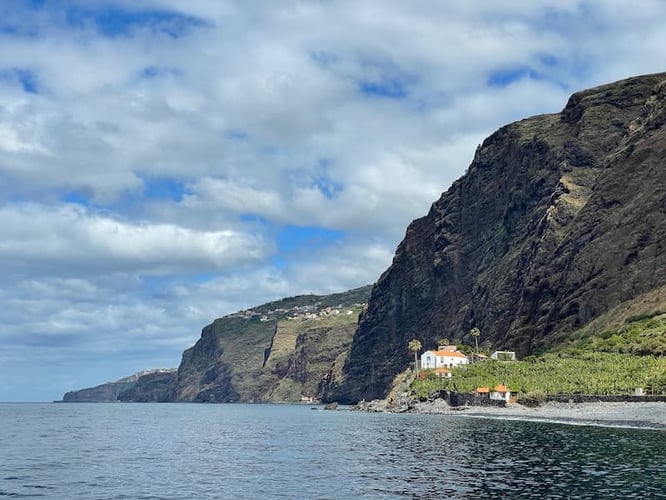Wine is liquid hospitality and our little travel memoir is punctuated by visits to famous wine regions and glasses of delight. This is the first: about Rheingau in Germany.
May 2016 was another Time of Gifts when an Englishman (and his Romanian girlfriend) could travel from London to Bucharest across a Europe as yet undivided by nationalism.
Unlike Patrick Leigh Fermor, Matthew and I didn’t walk the whole way but we did stay in castles, visit historical cities and enjoy the hospitality of strangers of many nationalities.
Welcome to Rheingau
Rheingau is a small but famous German wine region, within 20km driving distance from Frankfurt. It lies between the foothills of Taunus Mountains and the Rhine but our romantic satnav took us through Bingen, over the river on a ferry and through ancient hills and forests en route to our hotel. The sun shone on our arrival.
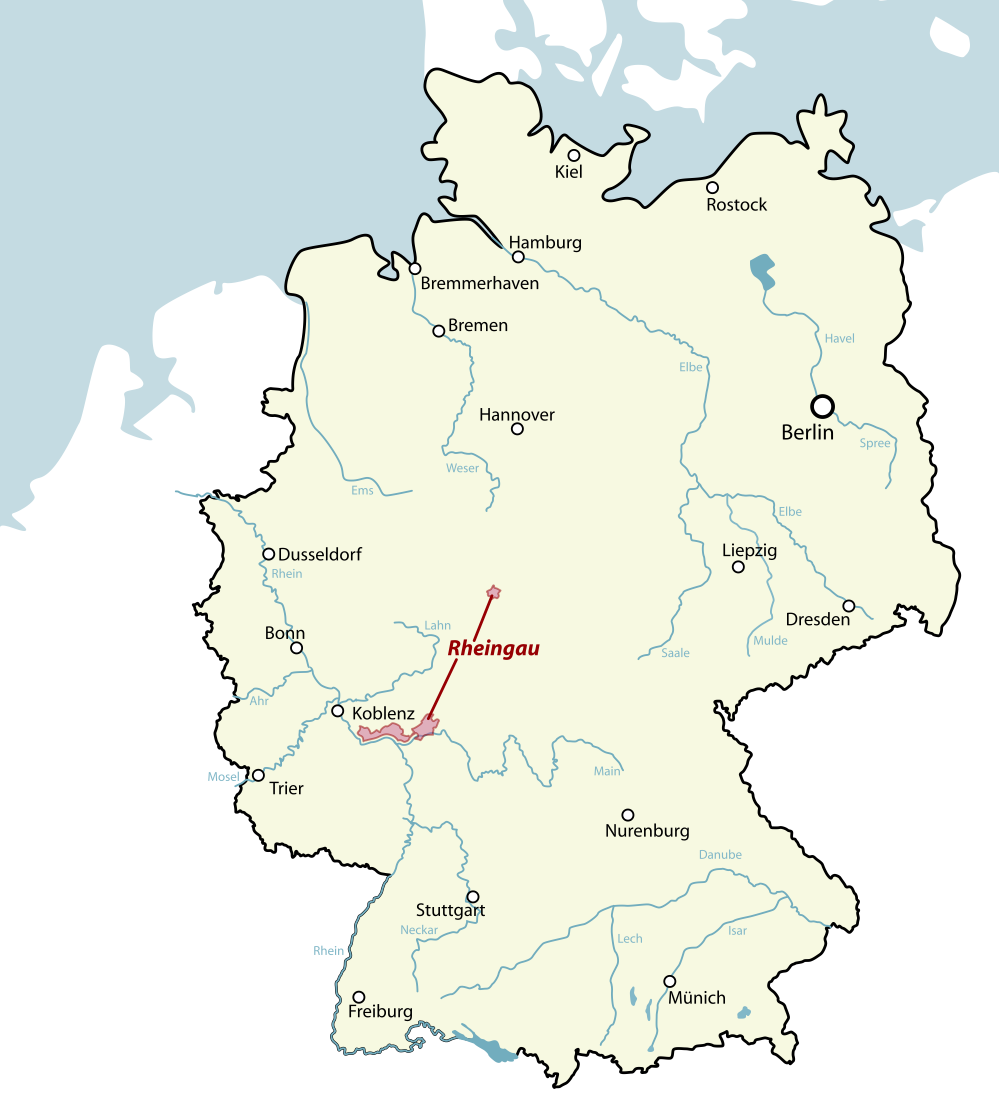
The region has a good climate for vines thanks to the nearby river, elevation and south-facing slopes, which are much gentler than in nearby Mosel. The region is warmer than other German Riesling growing areas. As a result, the grapes can ripen long into the autumn.
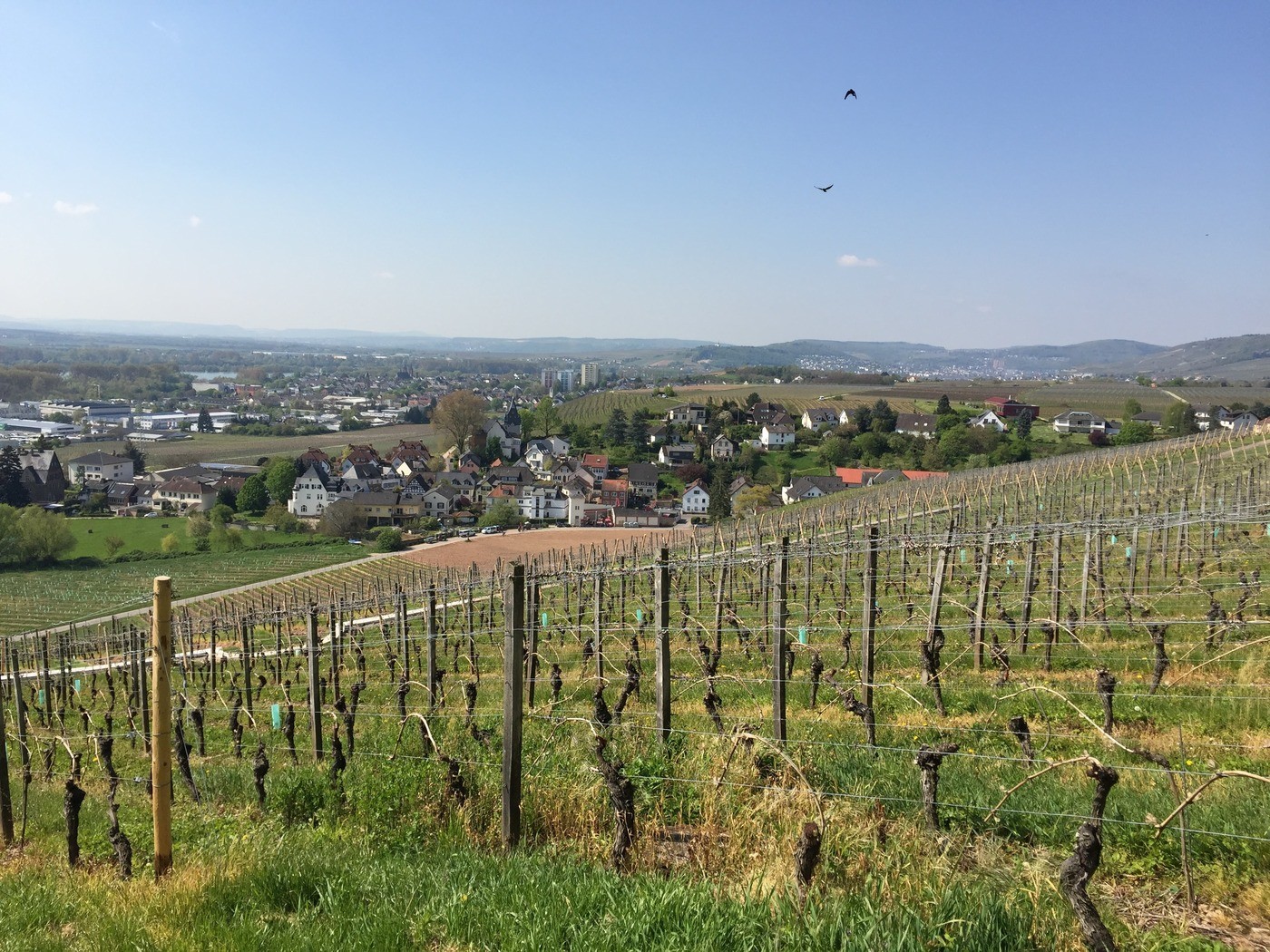
With a vineyard area of around 3,200 ha, the main varieties in Rheingau are Riesling with a bit of Spätburgunder (Pinot Noir).
The history of wine making in this area dates back to Roman times. Benedictine and Cistercian monks continued the tradition. A local winery, Schloss Johannisberg, claims to have discovered how to use noble rot to make delicious sweet wine. (More on this in a later article.)

German wine classification
It took me some time to learn about the German wine classification when I was doing my WSET exams. I struggled to pronounce the different words and understand what they represented, despite my affinity for foreign languages.
But fair enough, let’s keep it among ourselves: I was never a great student of German. In fact, I gave up in frustration after a couple of months studying it. It was too challenging to make the correct case declension of ‘der’, ‘die’ and ‘das’.
At least now, I can pronounce ‘Trockenbeerenauslese’ without breathing and on top of it, spell it correctly without googling first. The language got me in the end.
In 2012, the Verband Deutscher Prädikatsweingüter (the Association of German Prädikat Wine Estates, abbreviated VDP), an élite group of some 200 quality-oriented German vintners, simplified the German wine classifications. There are specific criteria in terms grape varieties allowed per region, maximum yields, harvesting method, labelling criteria.
In summary:
- GROSSE LAGE are the best vineyards in Germany and the wine is comparable with Grand Cru in Burgundy.
- ERSTE LAGE are first class vineyards with distinctive characteristics and the wine is comparable with Premier Cru in Burgundy
- ORTSWEIN is comparable with Village in Burgundy
- GUTSWEIN is comparable with a regional or generic wine in Burgundy
If you are interested in top-quality, like this Riesling Silver Seal, dry wine, look for the GG carved on the bottle
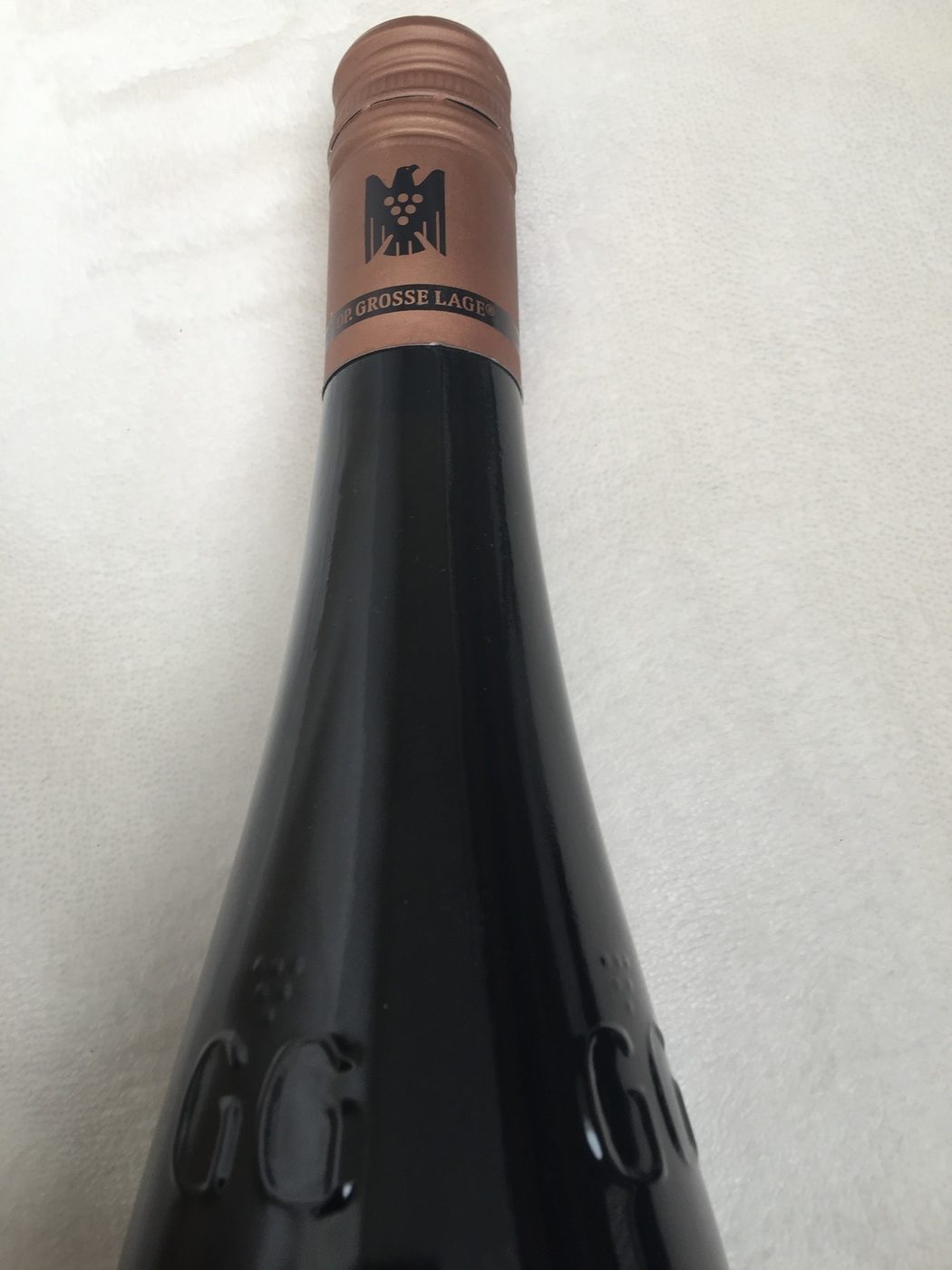
Hotel Burg Schwarzenstein
If you’re visiting the region, we recommend the lovely hotel where we stayed: Burg Schwarzenstein.
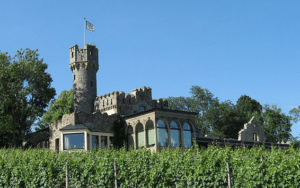
It’s right in the middle of a vineyard high up on a hill so that the restaurants and some of the rooms look down over the valley towards the river. It’s a generous, welcoming vista. The hotel lived up to its setting. They upgraded us to a junior suite when we checked in and we found a small bottle of Roederer Champagne waiting in the room. That was such a lovely treat, after a long day of driving.
I popped the cork and enjoyed a glass soaking in the vast bath tub. The bottle magically refilled on the second night, to our delight. Many hotels will give you a little bottle of something when you arrive, but not many give you the good stuff. Very few indeed give you a second helping.
Everything in the room was arranged to perfection, true representation of German efficiency and modern style. Immaculate, spacious, relaxing, comfortable and tasteful.
The journey to 100 stars
The hotel has a gourmet restaurant, with a Michelin star. The food was delightful, beautifully made and presented. When we go to a nice restaurant we always ask the sommelier for wine recommendations and I must admit, his recommendations went straight to our heart.
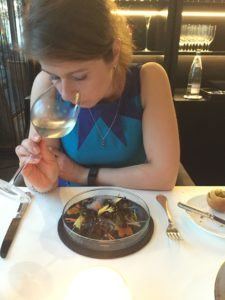
I had red snapper and Matthew had halibut, both done perfectly and we had a Japanese salad with a delicious young, acidic Riesling. The desert was just as remarkable – strawberries and green peppers, gorgonzola and chocolate – matched with a sweet spätlese.
It is always fascinating when you get a wine that goes perfectly with the food that you are having. It enriches the experience. Whether you’re a wine connoisseur or an enthusiastic amateur, a good sommelier is a great resource. They know their wines and they know the restaurant’s food so their advice should be spot on. For us, it’s also a treat to chat to a wine expert – we always learn something new.
Whatever the delights of the dinner table, my guilty pleasure was having breakfast. The breakfast room faces the vineyard below and under the morning sun it filled me up with joy, happiness and positive energy, ready for a new adventure.
Asparagus all the time, everywhere
Using Matthew’s favourite saying, we survived by ‘living off the land’ and had lunch as well at the Burg, on the terrace, enjoying the asparagus dishes, which they are very proud of, as white asparagus was in season.
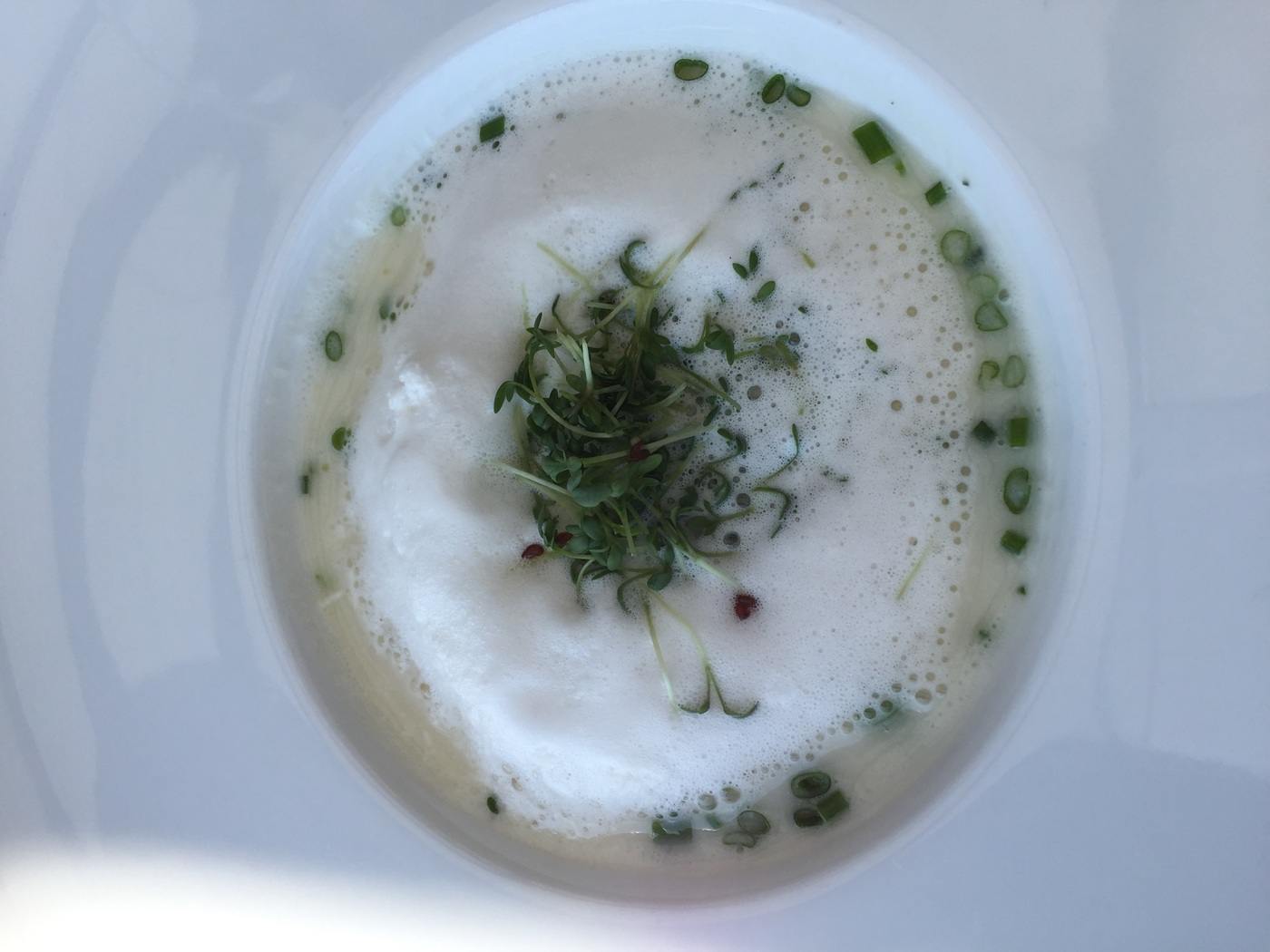
I almost got in trouble with the waiter, as he thought there was something wrong with my asparagus. The portions were so generous that I couldn’t finish all the asparagus on the plate next to the schnitzel. I had to struggle to finish so, food dilemma: what do you choose if you have limited space in your stomach? Schnitzel or asparagus? For me it’s schnitzel all the way. After all, for me the best vegetable is meat.
I had to explain this to the waiter, with a grin on my face, to Matthew’s amusement, mentioning that I also had a rich breakfast and that I have a tiny stomach and I couldn’t eat more, even if it were for a life and death situation. I think he understood.
At the recommendation of our hotel, we visited two Grosse Lage producers: Schloss Johannisberg and Schloss Vollrads, which we enjoyed a lot and recommend visiting.
In short, we recommend Burg Schwarzenstein, Rheingau, Riesling and schnitzel. But not necessarily in that order.
Updated 23.4.17 with the new map, additional links and product information.

